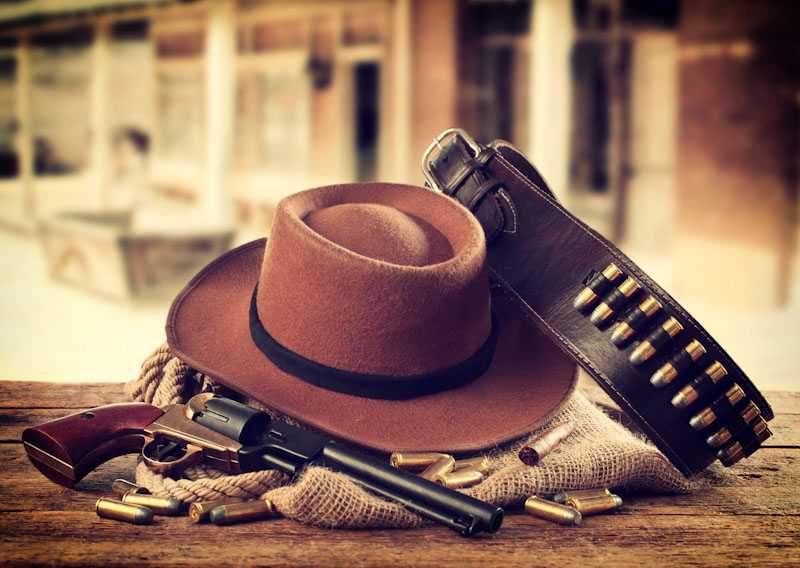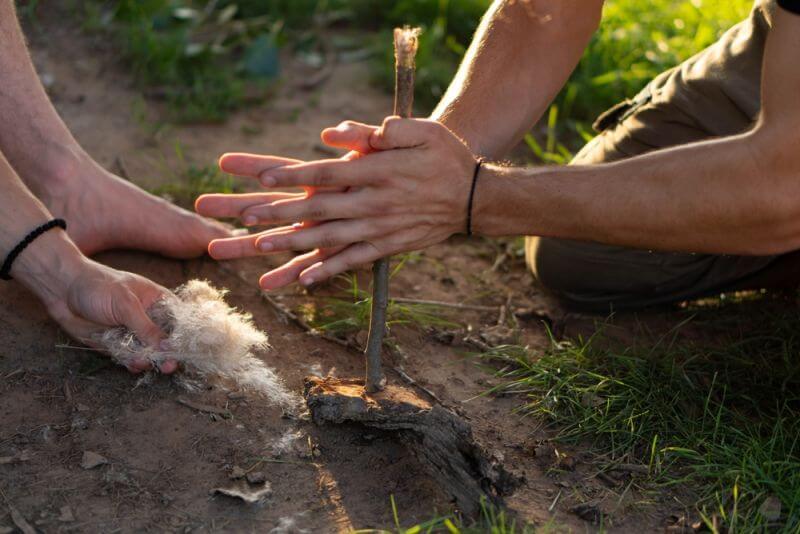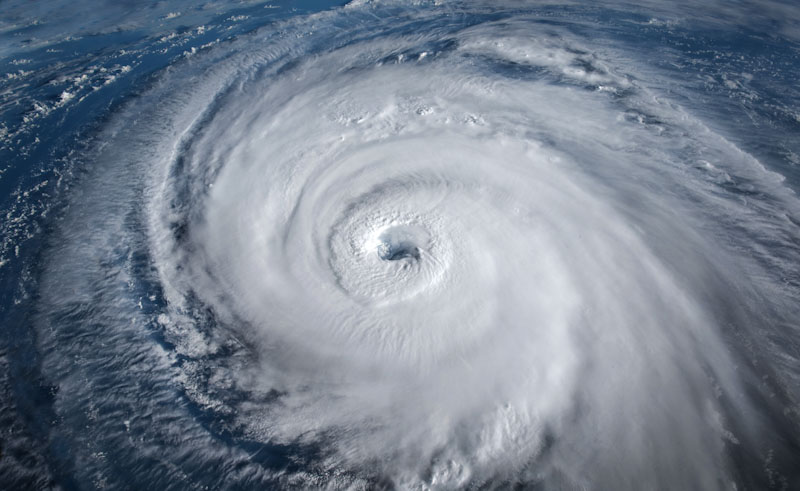I’m a big fan of the Western genre, especially the books by Louis L’Amour. Of all the western writers I’ve seen, I think he understands the times, the people and the places better than anyone else. When he talks about fist fighting, he pulls from his own background as a professional boxer. When he talks about shooting, he again pulls son his own extensive experience. He’s walked the trails and seen a lot of the land that he wrights about, firsthand. He’s talked to old-timers who lived back then, learning from their experiences.
I’ve always felt that I would have fit in well in those times of the Old West. My dad, on the other hand, should have been a mountain man. He trapped, hunted and fished the mountains, often dressed in a buckskin shirt of his own making. His Hawkins .50 cal. reproduction was of his own manufacture, as well as his black powder pistol. Both were exquisitely inlaid with brass wire. He took the same sort of pride in his weapons and his gear that those distant ancestors of old had taken.
It is family lore that Kit Carson was back there in our family tree somewhere. Maybe he came back, at least to some extent, in my dad. While I didn’t get the mountain man genes my dad had, I certainly inherited his love for the mountains and the high wild country. I was always at home there, although carrying more modern firearms than my dad did.
Perhaps that’s why I feel so comfortable as a prepper and survivalist. I’ve read much, written by those in the prepping community, which makes it sound like we’re going to be returning to a much more primitive lifestyle, after the next major disaster… whatever that disaster might be. This is obviously what the outcome will be, if we ever lose the power grid; but there are other things that can make it so as well.
There are many lessons we can take from the Old West, which can be directly applied to our lives, should we ever need to go into survival mode. Let’s take a look at a few, that we can find repeatedly in L’Amour’s writing.
Always be Vigilant
The Old West was filled with constant danger; and not just the danger that’s made it into the movies. Living in the wild, especially in a wild filled with animals who have not yet learned to fear the smell of man, is dangerous in and of itself. On top of that, there were many ways that someone could become injured. Being far from other people, one could easily die before anyone would be aware they were missing.
Being aware means much more than most of us think it means. One of the things that L’Amour mentions over and over again in his books, is the necessity to be constantly looking out for the threat of Indian attack. The cost of a moment’s loss of vigilance could very easily be the loss of one’s scalp.
Those of us who carry concealed talk about being in “condition yellow” where we’re keeping our eyes peeled for threats. That’s a good starting point; but not enough. Survival in the wild requires not only looking to see what threats there are, but also to see everything else. How else will we find animals to hunt, campsites to use and water to drink?
Try this sometime – take a walk through some wilderness area that you don’t know. It doesn’t have to be a long walk; a quarter mile should be sufficient. Then stop and try to describe the area you just walked through. What landmarks could you identify? What sort of plants and trees were there? Was there any birds or other wildlife? Did you see anyplace that would make a good campsite? What about a place to hide if you come under attack? How would you describe the place to someone else, if you were giving them directions?
Learn to Describe the Lay of the Land
One thing that L’Amour mentions in several of his books is how drifting cowboys, and others who were more or less constantly on the move, would have an “encyclopedic knowledge” of trails and campsites that they had never seen. They received that knowledge from talks about the campfire or in the bunkhouse, where cowboys and other travelers would share knowledge of places they’d been.
Some terrain features are particularly critical to know, such as water features. We have large swaths of land in this country, where surface water is scarce. Survival, whether by cowboys driving herds of cattle to the rails or your survival team trekking through the wilderness, is highly dependent on knowing where water can be found. But you don’t just need to know where it is, you need to know how good that water is (Is it brackish? Is it alkaline?) and how reliable it is when there hasn’t been much rain.
It’s impossible to share this kind of information or even understand these descriptions, if you don’t have an understanding of the language used to describe the land. Do you know what an arroyo is? How about the difference between a cove and a bay? What’s a hogback? How do you tell the difference between an animal trail and one made by humans?
All of these descriptive terms and many more are part of the language of the land. You’ll need those words to describe what you’ve seen to others, as well as understand what they’re describing to you. Ideally, those descriptions should form a picture in the mind of those hearing it. That picture may not be exactly right; but it needs to be close enough that they’ll recognize it when they see it.
Make Your First Shot Count
Going back to always being vigilant, it’s a commonly held belief in the prepping community that anyone you find in the wilderness will likely be a danger to you. That’s a good, conservative route to take, at least until you learn otherwise about them. Some with obviously be people like you, trying to escape the disaster; but even then, you can’t be sure that they won’t be desperate enough to try and take what you have.
One of the bits of wisdom I’ve read over and over in L’Amour’s books, is some old-timer, telling the younger guy to take his time, if he ever got into a shootout, and “make that first shot count.” That was usually accompanied by the observation that most fast draw artists put their first round in the dust.
While the fast draw and gunfights was largely an invention of Hollywood, it has become part of folk culture, to the point where people practice it and even compete in fast draw competitions. Should we find ourselves in a situation where we’re bugging out in the woods, we may just find ourselves confronted by someone who has practiced their fast draw.
Even if we don’t, the truth of the matter is that anytime we draw a gun, with the intent of using it, we should be extremely careful about where our shots are going. Any bullet that doesn’t hit the intended target is just a wasted bullet. Worse, it might actually hit someone we don’t want it to. Whether that be an innocent bystander or someone from our own party, it would certainly be tragic.
One or two well-placed shots will accomplish more than a dozen that go wide of their mark. While we might all want to be the first one to fire, I’ve decided I’d rather be the first one to hit my target. Ultimately, that’s more important.
Always Carry What You Need
When cowboys went out on the range, even if it was just to check a waterhole or some other task which would see them back at the bunkhouse that night, they went ready and equipped. The cowboy’s saddle bags and blanket roll made for a pretty complete survival kit, allowing them to spend a few days out on the range, if they needed to.
Our modern equivalent is our EDC bag or get home bag. As some advertising firm has said, “Never leave home without it.” Disasters don’t happen on our schedule and don’t announce their scheduled arrival. None of us know when we might find ourselves caught in a survival situation, any more than those cowboys riding out on the range. If we don’t have what we need with us, then we’re much more likely to have a hard time surviving.
Keep in mind here that most of the “survival kits” you find out there for sale are more or less worthless. What they are, are collections of tools that can be considered survival tools, packaged together to look cool. Rarely are they complete and those that are usually don’t have enough of anything to last more than a day. But you can be sure they’ll have a small multi-tool, a tactical flashlight, a paracord bracelet, probably a carabiner or two, and a couple of other more or less worthless tools.
Build your own survival kit, so that you can make sure that it has everything you need. Make sure that what you have is high quality too. Cheap survival gear isn’t worth carrying, as it will likely fail just when you need it the most.
Learn to Live Off the Land
I’m going to seem to go against something I typically say and say that you should learn how to live off the land. My oft-stated aversion to this consists of two things. First is the sad reality that few of us truly have the knowledge to live off the land. Secondly is that game isn’t as prolific as it was back in the days of the Old West. No matter how good a hunter you are, if there’s no game to shoot, you’re going to go hungry.
But that doesn’t negate the fact that it’s a good idea to learn how to live off the land, as many were able to do back in the Old West. Even the wagon trains, heading west, would try to hunt and fish for food, as often as they could, augmenting the store-bought supplies they carried along. They understood that there was only a limited supply of food in their wagons and that there weren’t going to be supermarkets where they could stop to resupply. Hunting for food augmented their supplies, providing much-needed protein.
Likewise, our bug out bags only hold a limited amount of food. While it is probably more nutritious and more varied than what the average cowboy carried, it isn’t enough. The more food we can hunt or gather from the land around us, the longer the food we’re carrying will last.









